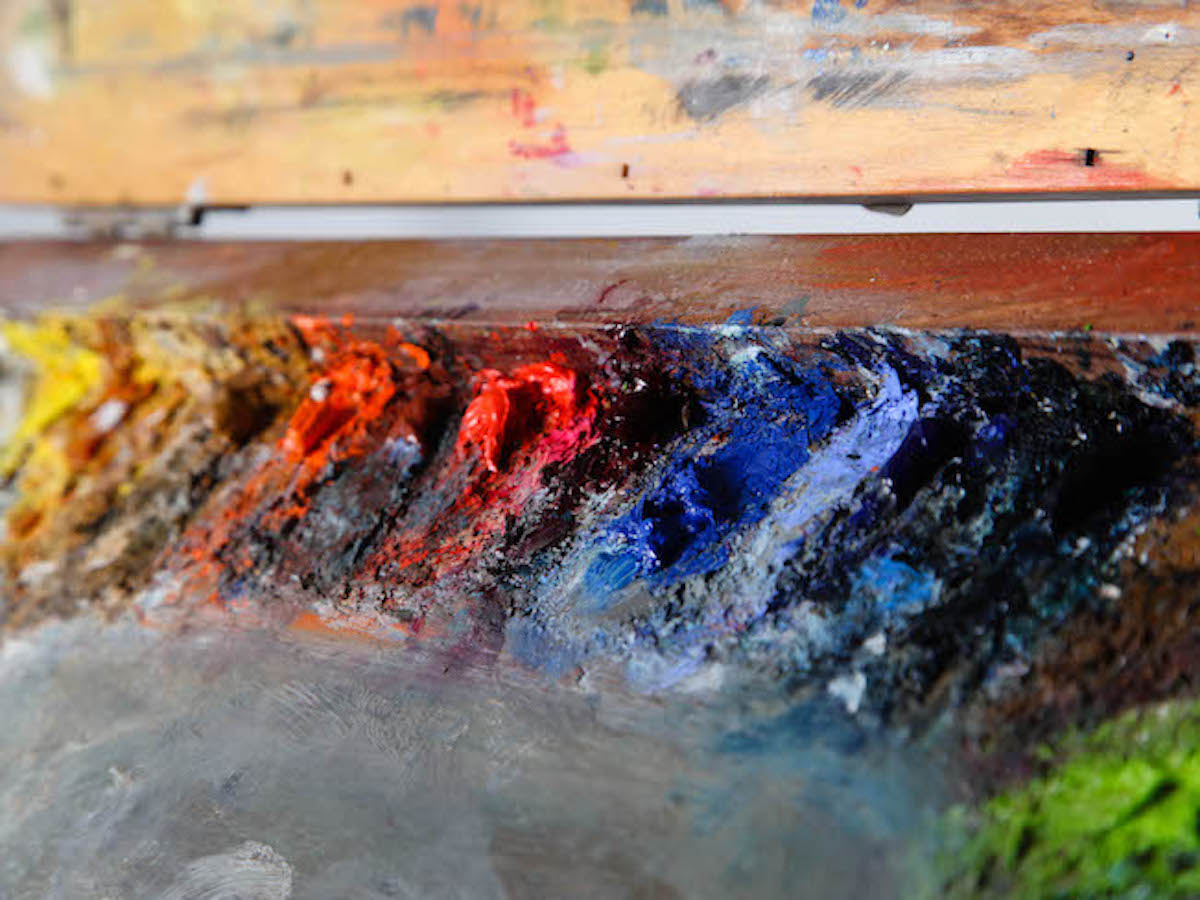
Oil painting has a long and rich place in art history, and it remains a popular medium today. If you’re familiar with acrylic, switching to oil paint is straightforward. But like any material, it has its idiosyncrasies that you should know before putting your brush to canvas. Here are 10 tips that will help you master this medium!
1. Don’t be afraid of mistakes.
Fear of making mistakes prevents a lot of people from painting. Realistically, the worst that can happen is that you abandon it, or scrape down the parts that aren’t working and paint them over again. Painting can be thought of as a series of choices and judgments. Just like in life, sometimes we make the wrong ones and not only is that OK, it’s also inevitable.
So, next time you feel like you’ve messed up your painting, instead of saying, “Oh, no! I blew it,” just ask yourself, “What’s next?”
2. Invest in your supplies.
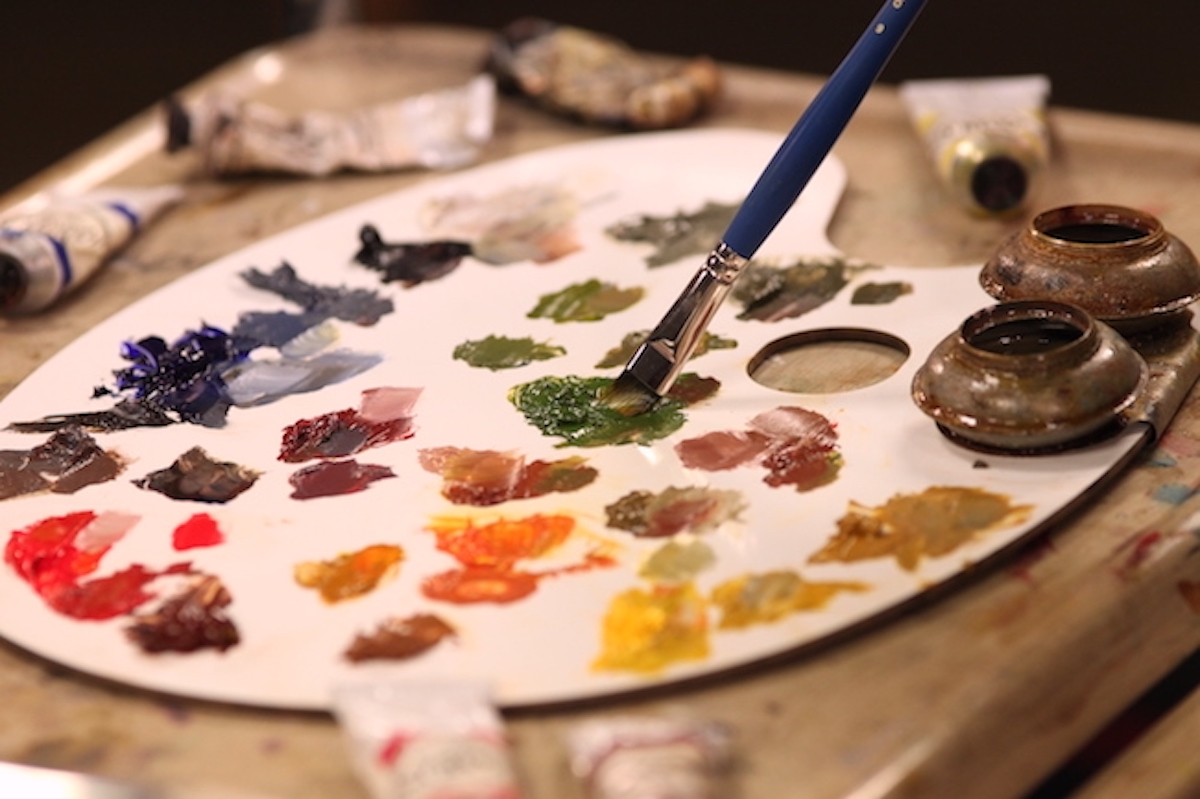
Inexpensive paint has a lot of filler, so it takes more to cover an area, which means you won’t be saving as much money as you thought. Cheap brushes don’t hold up and don’t let you control the marks you want to make. If you find that you’re fighting the brush to get the result you want, it’s time to upgrade. Opting for professional-grade paints, brushes, and canvases rather than student-grade products will pay off in the end.
Since everyone has different preferences for what feels good to paint on, try out a variety of decent quality canvases or panels until you find the one that’s right for you. If you’re not invested in traditional stretched canvas, you might try gessoed cotton canvas panels.
3. “Reflect” on your work with a mirror.
You might be surprised to find that using a mirror is one of the best ways to catch mistakes. For whatever reason, seeing a painting in reverse can cause any problem areas to jump out. If you’re painting a portrait, it’s a great way to check that the eyes and other features are looking right. For a still life, it will illuminate the relationships between objects and help imbalanced elements stand out.
4. Take care of your health.

There’s no getting around it—painting in traditional oils means odors and fumes. Be aware of the air quality in your painting space. An air filter with a carbon insert will remove VOCs (volatile organic compounds) from the air. A small desk fan will also help to keep the air moving.
5. Try a limited color palette.

Start experimenting with a limited palette of four colors. Consider essential colors like Titanium White, Cadmium Yellow, French Ultramarine, and Permanent Red Medium, and try using these colors alone to create a composition. Though challenging, there’s a big advantage to this approach: color harmony happens automatically. It will also open your eyes to the color possibilities “in between” the options you can find at the store. With these basic colors and an understanding of color theory, you can mix them to create nearly any hue you need.
6. Understand the five elements.
There are five key elements that are present in every representational painting: design/composition, drawing, value, color, and edges.
Design/composition
Once you have the idea for your painting, make a few thumbnail sketches about 1” to 2” in size to work out the design. Don’t get into detail; just work on arranging the main elements. Try different proportions of rectangles or see how it might look like as a square.
Drawing
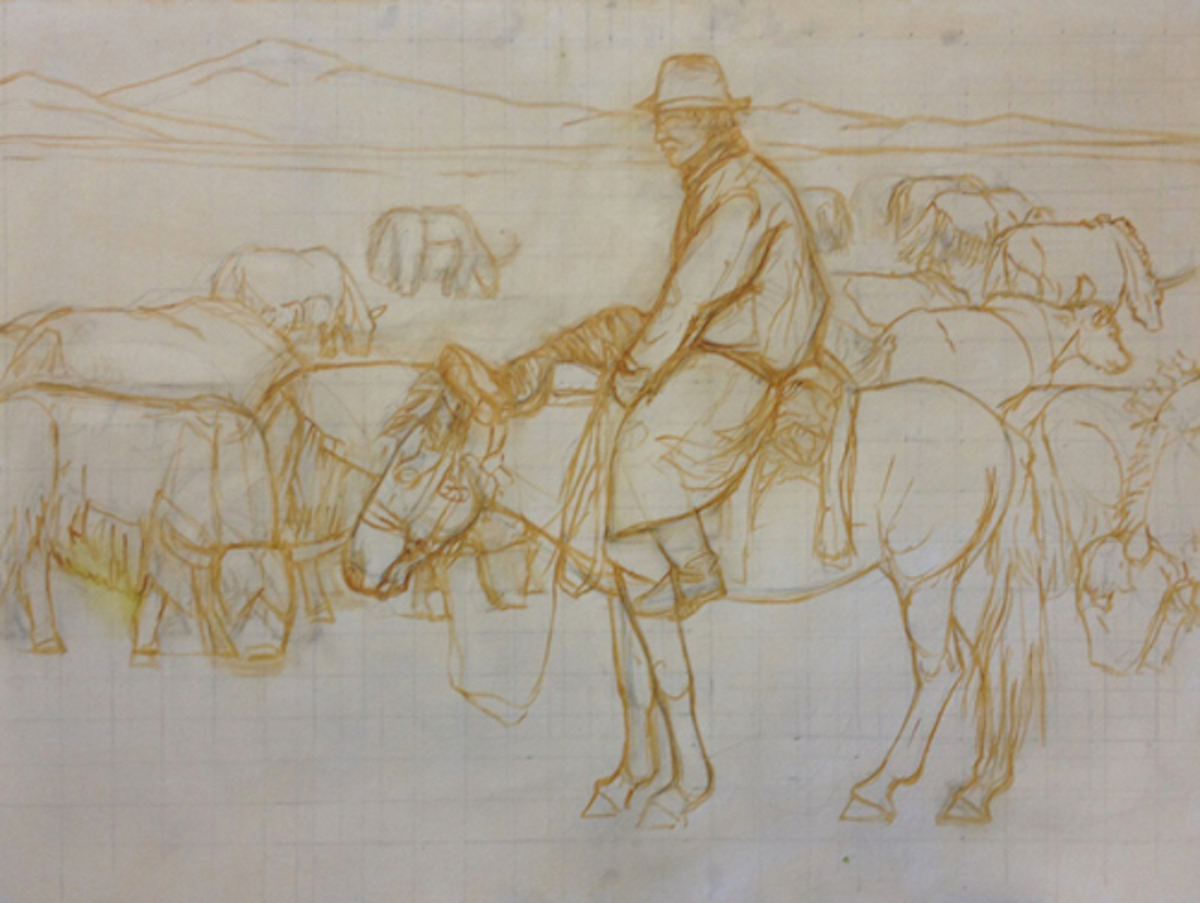
Once you have a design, it’s time to draw it. You might do a pencil study first, then transfer it to your canvas. Or you could start by drawing directly with a brush on the canvas, either inline or shape. Either way, be as accurate as you can. In the end, the only way to learn how to draw… is to draw. A lot.
Value

Value is the relationship between light and dark, separate from the color or hue. Fantastic paintings always have great value relationships. You want the area of highest contrast to be where the center of interest is—this is where you want the viewer’s eye to go first. Color
We all love color. It’s a big part of what makes painting fun. But, because there’s an endless number of colors, it’s easy to get lost in trying to understand what colors to use to convey what you want. A good color wheel is very helpful when you’re starting out and will help you understand the relationships between different colors. Edges
Edges are where the different elements of your painting come together. To handle them well means being responsible for making decisions about the quality of every edge, determining how hard or soft it should be. Having a variety of edges is one element that sets great paintings apart from merely good ones.

7. Break down your subject.
In most paintings, you probably have a subject that you’re trying to convey or represent. But the act of painting is characterized by understanding how to break down your subject into more abstract elements in order to truly capture its essence.
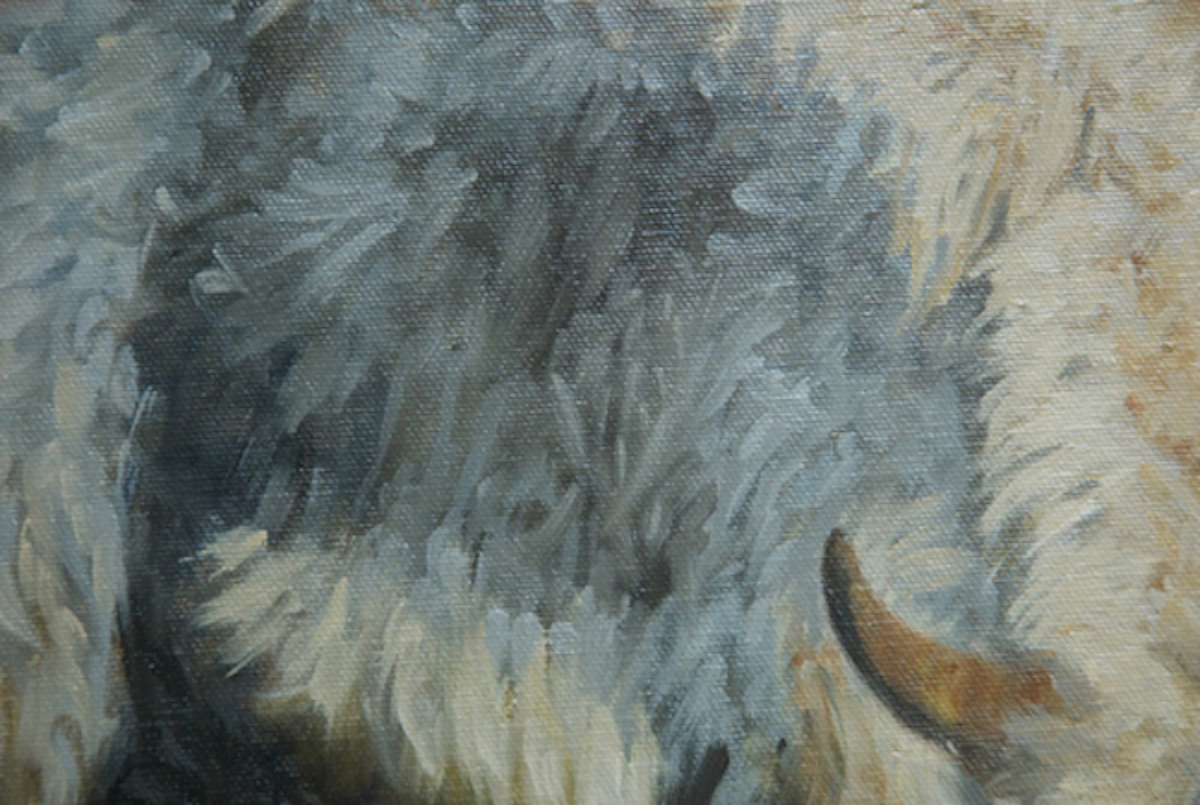
For example, there’s no tube of paint labeled “the light in a child’s eye.” As artists, we have to create that light by knowing how to the use of shapes, values, edges, color, and temperature. This is the craft of painting. Embracing a more abstract way of thinking is a liberating way of seeing the world and will help you greatly in your paintings.
8. Learn to draw first.
Painting itself is a form of drawing, whether representational or abstract. The two are not mutually exclusive. It’s essential to accurately observe your subject and practice the motor skills to put down what you see. These skills take time and effort to acquire, but learning to sketch out your composition first will help you achieve it when you begin to paint.
9. Stay focused on your vision.
It’s important while painting that you are careful not to lose sight of your initial vision. It’s easy to become distracted as you paint, and while shifting your vision is fine, maintaining a clear goal will help you translate what is in your mind’s eye to the canvas.
All other elements must be subordinate to the central idea of your painting, even if it may be a detail that you love. If there are details in your composition that don’t align with your initial vision, as much as they may have grown on you, they may throw off the look of your finished painting.
10. Be objective of your work.
Being either overly critical or overly forgiving will get in the way of your growth as an artist. This is not easy, but it is necessary. Everyone has a bad day in the studio. This struggle often means that growth is happening. The only thing to do is to pick up the brush and keep going.
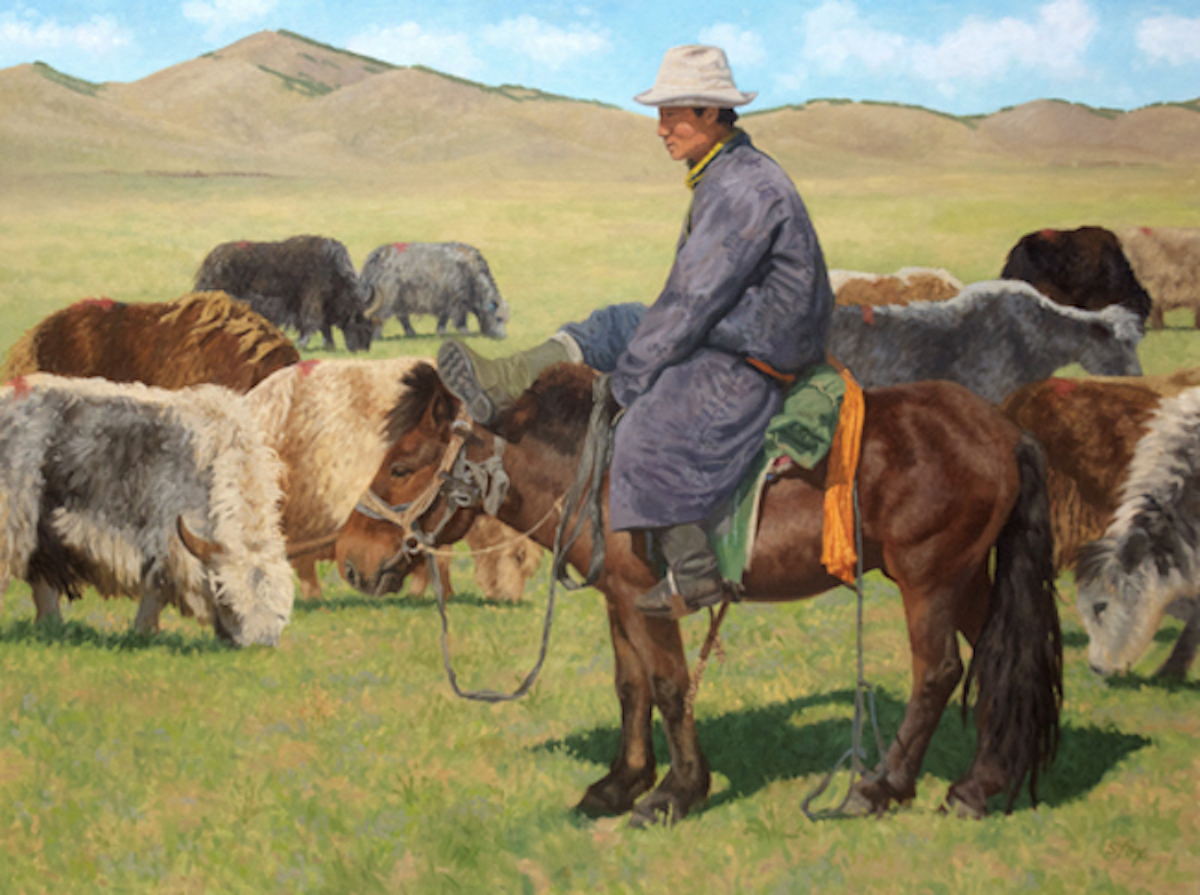
When the work is cruising along, it’s can feel really nice, but it can also become a plateau. If you get too comfortable with your work, you may not see what areas need additional attention. Every artist has areas where they can improve, so the best thing you can do is to constantly seek new skills and find joy in the learning process. Because, really, what a privilege it is to be an artist!
Look at what is, not what you think it is, Both subject and painting.
Thank you for sharing your info. I really appreciate your efforts and I am waiting for your next post thanks once again.
It's impressive that you are getting thoughts from this post as well as from our argument made at this place.
Wow that was strange. I just wrote an really long comment but after I clicked submit my comment didn't show up. Grrrr... well I'm not writing all that over again. Anyway, just wanted to say excellent blog!